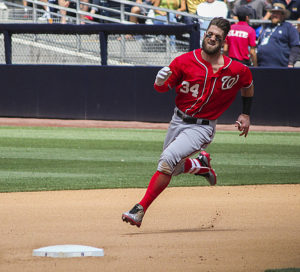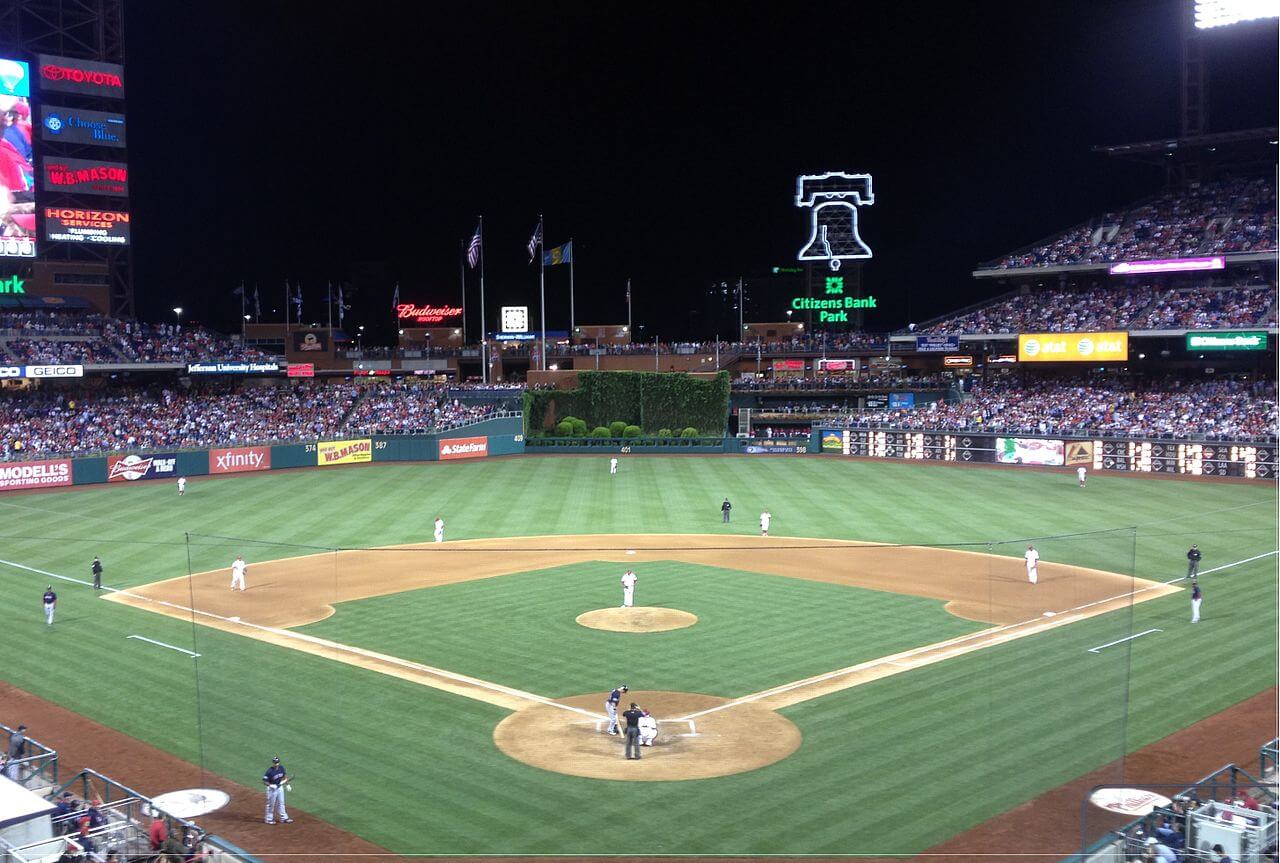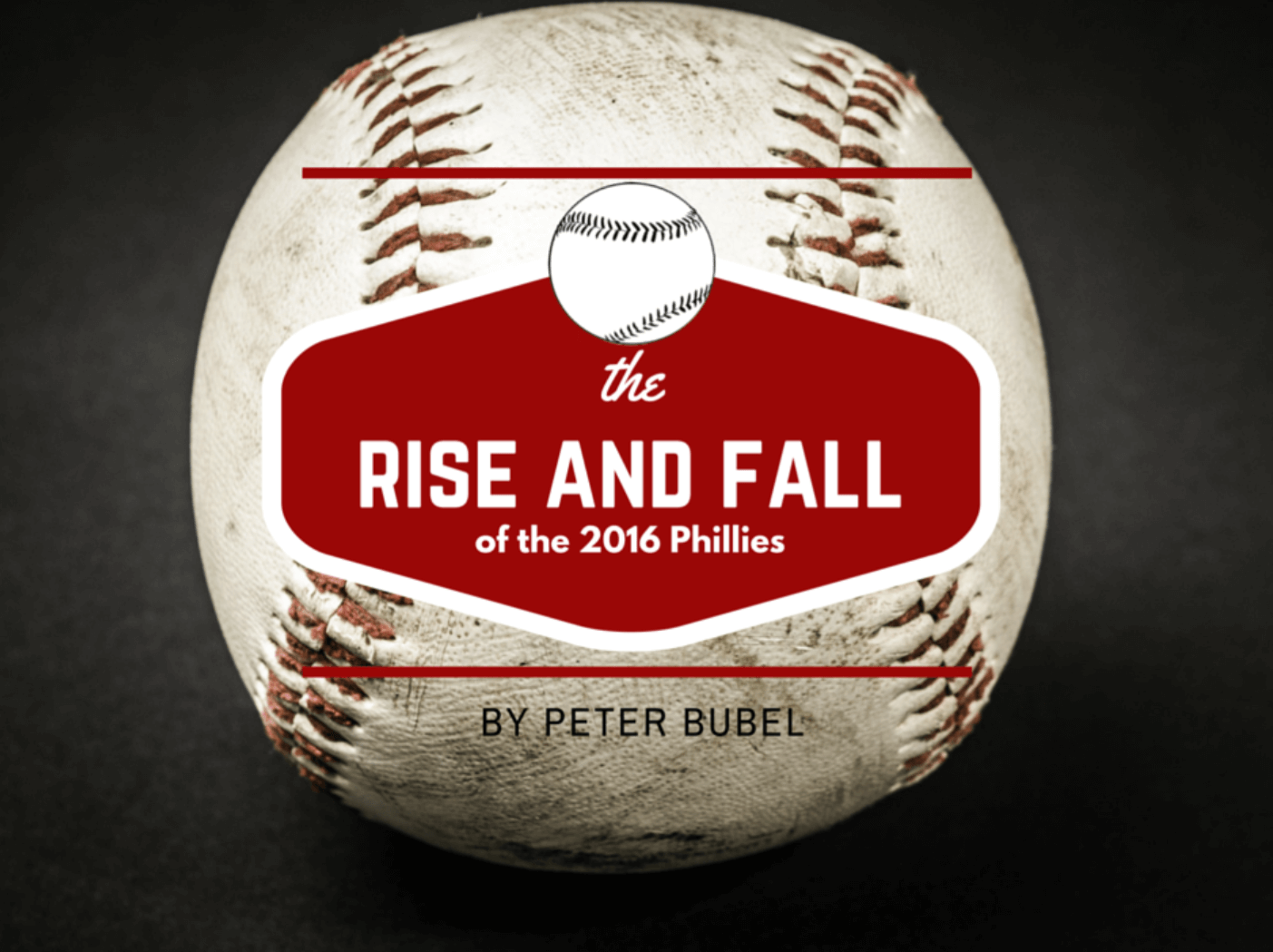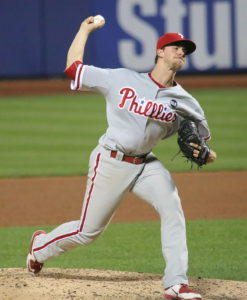To view this post as a video, visit Peter Bubel’s YouTube.
The Philadelphia Phillies were not supposed to be good this season. They were coming off of a 63-99 2015 season, good for dead last in Major League Baseball. Preseason projections had them hovering around 100 losses and universally finishing last in the National League East.
But, for a period of time, there was hope on the horizon. Through the troves of Tweets from Phillies fans around the country came the hashtag #HighHopes, a reference to the song popularized in Philadelphia sports by late broadcaster Harry Kalas. The hashtag acted as a sort of “we may be the laughingstock of baseball right now, but look who’s playing not-too-terribly after all.”
The high hopes were, predictably, short lived. After a brief run that saw them climb to within a game of first place early in the season, the Phils have returned to preseason form, compiling a 7-19 record so far in the month of June and an 8-26 record in their last 34 games played.
So what was the cause of the Phillies meteoric rise in the standings, and subsequent hurtle back towards Earth where they crashed into a ditch on the side of I-76 and were left for dead?
The One-Run Conundrum
There was a point of time this season during which the Phillies, baseball’s [second] worst team, owned a 13-3 record in one-run games. Yes, games that were decided by one run were almost universally won when Philadelphia was involved. It was incredible and, according to statisticians and baseball writers, unsustainable. But some Phillies fans took the offensive, claiming they had high hopes the Phils could continue winning one-run games at a prolific clip.
Turns out, the statisticians were right. After losing just three of their first 16, the Phillies have dropped six of their last 10 one-run games, bringing their record in those contests to a (still very good, and very unsustainable) 17-9.
Their Run Differential Caught Up to Them
As it stands right now, the Phillies run differential is an uncomfortably bad -160. To put that into perspective, the league-best Cubs sport a +258 run differential–meaning they’ve scored 258 runs more than their opponents to this point in the season.
Unlike their record or Freddy Galvis’ batting average, the Phillies run differential hasn’t fluctuated, remaining last in the league (or close to it) for the better part of the season. A low run-differential means a team is consistently getting outscored by its opponents by large margins. The 13-3 record in one-run games pointed to the huge regression that was incoming–the Phils were winning games, yes, but they were doing it by one run. Then, they were turning around and dropping other games by 8 or 9 regularly.
The Starting Pitching
Aaron Nola was supposed to be our savior. He was going to be our lone All-Star, the next Cole Hamels and the one piece of the team that Phillies fans could proudly boast “well, at least we’ve got him.”
Lately, it’s looked like Nola is going to need more time to adjust to the big-leagues. After compiling a 3.55 ERA in April and a 2.31 ERA in May, the wheels have fallen off the Nola train to the tune of a 10.42 ERA in June. He hasn’t made it out of the fourth inning since June 5, allowing 32 hits, 22 runs and walking 7 in his last 16 innings.
Nola is not the only pitcher who has struggled–Vince Velasquez has had problems pitching deep into games, and his high pitch counts have given him arm troubles lately–but he is the prime example of the Phil’s late SP struggles.
The Bullpen
We all knew that the Phillies bullpen would more closely resemble a trashcan engulfed in flames than it would the pristine 2008 World Series Champions’ pen. But a few weeks into the season, the pen looked strong. Jenmar Gomez was closing out games at an absurd pace and Hector Neris was nearly untouchable. And then, they weren’t.
Gomez, who typically pitches to contact, is not the prototypical closer. We’re used to seeing the Brad Lidges, the Billy Wagners–more recently the Ken Giles–the hard-throwing, bat-missing, intimidation-above-all-else back of the bullpen options. Jenmar Gomez doesn’t fit that bill.
And after Neris’ unblemished start to the season, he’s struggled a bit lately, as he’s striking out significantly fewer batters, walking more, and allowing more hard-hit balls.

Preseason projections had Nationals right-fielder Bryce Harper outperforming the entire Phillies team. Photo courtesy of Johnmaxmena2.
The Offense
Before the season started, projections put the Phillies starting offense–that is, hitters one through eight in the lineup–as being roughly as productive as Bryce Harper. That means that eight hitters for the Phils were supposed to create the same amount of offensive give and take as one 23-year-old outfielder from Washington.
If you need evidence that the Phillies are struggling offensively, allow me to direct you back up this blog a bit to the -160 run differential.
Or the second-worst 269 runs scored.
Or the second-worst .235 batting average.
Or the league-worst .289 on-base percentage.
I could go on, but I won’t.
The Phillies have struggled this year. And despite playing significantly better earlier in the season, they’ve regressed towards the mean pretty quickly in recent weeks. While some Phillies fans may have deluded themselves into thinking a playoff berth (or above-average season) was in the works, most saw this coming.



